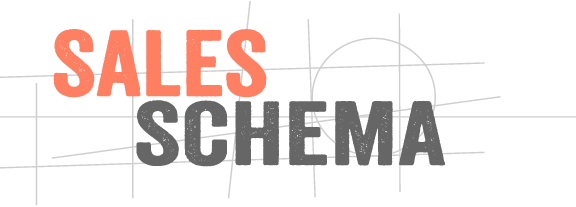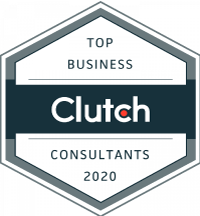It’s like chiseling away at a big, clumpy mold of clay until you have a diamond bullet.

Our discovery process that is. After many tough questions, we reveal the most likely strategy for generating a consistent stream of ideal prospects into our customers’ sales pipelines by way of cold email or other outbound methods. After we’ve tossed away the detritus of perceived features and benefits that don’t matter in our world, we’re left with the few elements we need to run a successful campaign. Just as important, we know if we have a client who can close the leads we send.
In other articles, I’ve covered the nuts and bolts of building lists and writing templates, but here I’d like to take a step back by giving you the exact building blocks you need before getting started. If you begin here, I’m confident that your next campaign will be much more likely to drive new business sooner rather than later.
Ingredient #1: Two ideal niches
As any skilled poker player will tell you, table selection is everything. Your email template can be somewhat clunky yet it can still generate leads by the droves if your messaging is aligned to the right target audience.
When we start new campaigns, focusing on two niches from the beginning works best because it allows us to hedge our bets and get meaningful insights, without getting lost in the data swamp arising from too much micro-segmenting.
Niche down (even if you think you can do it all).
You might not be the best copywriting agency in the world, and you might not understand the software business like the VC firm Andreessen Horowitz does, but where your disciplines intersect is where you have the most leverage. The center of the Venn Diagram is where you’re the best in the world. Your buyers will talk to you only if you’re the Michael Jordan of your game, even if your game is highly-niched, like, say… jai alai.
Ideal niches.
The “sweet spot” of leads to be had by modern digital methods tends to be small-to-midsize companies with 20-500 employees, who are generally “white collar”. Smaller companies often lack budget and larger companies have multiple approval layers that make the sale difficult. 20-500 employees is just a guideline, so feel free to pursue a strong prospect outside this size range.
Highly-responsive industries:
- Information technology and services
- Marketing and advertising
- Accounting
- Management consulting
- Computer software
- Internet
- Human resources
- Professional training and coaching
- Agency partnerships
These campaigns go off like gangbusters because agencies love to collaborate. If you have a convincing value prop for agencies that complement your service, and you’re okay with a re-seller model, you can generate many ideal leads.
“But wait! Can’t I target large companies?”
Yes, and you can often get conversations and closed business, but the sales cycles is longer, and responses tend to be fewer, and that’s why we like to back up whale hunting with smaller fish netting.
Bad niches
While there are exceptions, certain niches are tough to reach through email, LinkedIn, and other highly-scalable digital mediums. Sometimes it’s because these groups are traditional, hierarchical, highly skeptical, blue collar, outdoor, or all of the above.
Here are some industries that are notoriously hard to reach through modern methods:
- Alternative Medicine
- Individual & Family Services
- Military
- Civic & Social Organization
- Judiciary
- Museums and Institutions
- Dairy
- Law Enforcement
- Performing Arts
- Farming
- Law Practice
- Political Organization
- Fishery
- Legislative Office
- Primary/Secondary Education
- Government Administration
- Libraries
- Public Policy
- Government Relations
- Maritime
- Ranching
- Higher Education
- Medical Practice
- Religious Institutions
- Hospital & Health Care
- Mental Health Care
- Veterinary
Other qualities of undesirable niches:
- Small geographic target area.
It will be difficult to scale your campaigns for the long haul. - Very mature markets.
These markets have extremely high competition, limited demand for new sales, and low margins. Mature markets are often highly concentrated. Examples are the photocopier business and commercial travel agencies. - Highly concentrated market with only a few well-known sellers.
An example is Verizon selling wireless services to businesses against AT&T and Sprint. - Industries with declining or stagnant sales.
This indicates a lack of demand and flow of money. Example: photocopier machines.
Ingredient #2: A Diamond Bullet value proposition
When I ask many agencies about their value propositions, the most common answers are, “our creativity”, “our stellar client service”, “our fresh and original ideas”, and similar responses. While all of these benefits might be genuine, they are terrible outbound value props because your prospects have to want what you’re selling before they will ever care about the manner in which you deliver it. Also, “creativity” or “great service” are not differentiators your prospects experience until long after they’ve taken a leap of faith by hiring you.
Keep in mind that we have 1-3 sentences to create an emotional reaction that makes your prospects want to speak to you. Attention is the scarce commodity of our day, and since you’re competing against many distractions, confusion is your kryptonite. This is where you chisel away at the big, clumpy mold of clay.
Go for the “push,” not the “pull”.
What was the last car commercial you watched on TV? Unless you’re in the market for a car, you probably don’t remember. It’s all white noise until the rare moment that you start shopping for that new sedan, at which point the TV will grab your attention when the new Honda cruises across the screen.
Car companies can deal with this needle in the haystack pull dynamic because their audience is massive. A boutique agency, on the other hand, will get lackluster results if they rely on the slim likelihood that their prospects are in the market for their service at the exact moment they contact them.
Instead, you must push your prospects toward a solution that they might not specifically be considering to cure a major pain point. This leads to a teaching-based sale, which as demonstrated by stellar research in The Challenger Sale, is what really moves the needle.
Example: avoid a pull-based value proposition like this one:
“We create beautiful websites for B2B Saas companies…”
Prospect response: “Great, but I don’t need a website right now, so we don’t need to talk – please follow up next year.”
—
Here’s a push-based value proposition akin to the type we regularly employ to get 16%+ response rates:
“We’ve worked with several B2B SaaS companies in the past, and we’ve found that direct response-focused website overhauls are a great way to increase revenue and aggressively grow their customer bases…”
Prospect response: “We’re looking to grow, and direct response sounds interesting, so let’s chat.”
—
Pushing is NOT creating a market out of thin air.
The goal is to solve a major pain point in a way that’s relatively new and compelling, but not so cutting edge as to be risky or confusing. You’re not selling a product or service that’s unproven in the marketplace, as many tech startups do. If you do that, your prospects will get bewildered and won’t respond. Aim for a service your buyers might have considered, experimented with in a previous life, or at least understand on a rudimentary level.
Show compelling and falsifiable results.
Showing falsifiable results in a particular niche boosts your trust and communicates that you know something your audience doesn’t. Not every offering can offer hard ROI numbers, but simply referencing qualitative results you achieved for relevant clients can go a long way.
“I only want to talk talk to people who are ready to buy.”
In the past, I’ve written about ways to target prospects based on “triggers”. While you can do a lot of research on a shortlist, and cross reference news articles or hiring ads that suggest buying intent, it’s very difficult to do that at scale. If you want to build a lead generation machine that can run on its own for the long term, you have to go for broader, yet niched, targeting, and improve your campaigns over time instead of fighting the uphill battle of identifying those who are “ready to buy”.
Ingredient #3: The right sales attitude
You might be familiar with the feast and famine rut: you hustle to win clients, you celebrate closed business, and then you pause on selling so you can be at the beck and call of your new clients. The problem is that the business you close month’s from now is determined by your sales activity today. You must be process-oriented, not outcome-oriented, in order to maintain steady, if not substantial, growth, and avoid major downturns.
Here are some pieces you should have in place before getting serious about outbound.
Active sales culture.
We like to work with clients who take ownership over being in sales. If your messaging and value prop are genuine, and you’re targeting the right people, you’re doing them a disservice by not being persistent with them.
Phone bravery.
Lead generation solves a straightforward problem: turning prospects from cold to warm. From there, the sooner you can get them on the phone, the sooner you can move your sales process forward. Before launching your campaign, make sure you’re ready to shed your phone shyness. Avoid the temptation to go through endless email exchanges before a conversation has been had.
Willingness to learn.
Sales is a domain for continual learners, and the best salespeople are humble and motivated by continuous improvement. They test themselves by selling to new types of customers in new domains that at times make them feel uncomfortable.
On the other hand, many sales novices think leads are their bottleneck, and they brag about their insanely high close rates. After some scrutiny, we often find that their numbers are fuzzy because of domain bias: their sample is dominated by inbound referrals from friends and acquaintances, or repeat business from existing clients.
That’s not to say that there’s no skill to inbound sales, there certainly is, but outbound requires a higher level of persistence. It’s like comparing flag football to full contact. There is a learning curve, which in our opinion is worth it because success in outbound means taking command over an automated and infinitely scalable lead source that you control.
You value conversations with ideal prospects, even in the face of long sales cycles.
If you’re with an agency, you probably don’t sell cheap widgets. Most likely, you sell high-end marketing services. When you’re lucky, sales cycles last a couple weeks, but usually, you’re looking at months and occasionally years.
In the same way that a marathon runner gauges her progress by mile markers, skilled salespeople measure themselves by the quality and quantity of the weekly conversations they’re having, or by advancements versus deferrals, not closed business alone. If the salesperson’s only measure was closed business, she would get discouraged and run out of steam at the first mile marker.
You maintain sales activity, even if you’re busy.
Fires from clients and staff will arise, but pausing on your sales activity is a surefire way to fall into the famine rut in the not too distant future. If your sales time is getting squeezed by operational needs, hire salespeople, or reduce your client service obligations, but never pause your sales activity, no matter how sunny the skies look today. If you’re at the top of the graphical wave, you want your inevitable downturn to be a mild dip instead of stomach-turning roller coaster drop.








